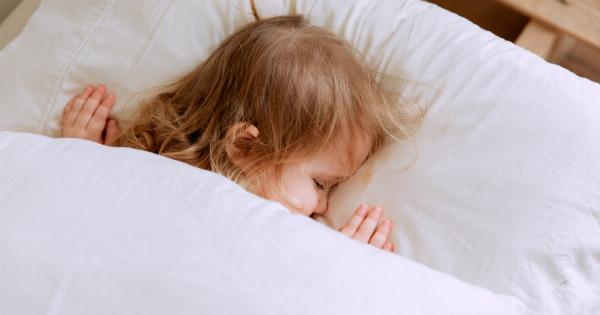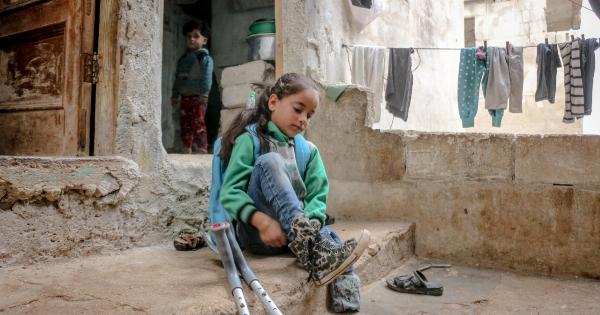How to Help Your Child Fall Asleep Faster (and Stay Asleep Longer)
Getting a good night’s sleep is essential for the overall health and well-being of your child. However, many parents struggle with getting their little ones to fall asleep quickly and stay asleep throughout the night.
If your child has trouble falling asleep or frequently wakes up during the night, don’t worry! In this article, we will provide you with effective strategies and tips to help your child fall asleep faster and stay asleep longer.
Establish a Bedtime Routine
Creating a consistent bedtime routine can signal to your child that it’s time to wind down and prepare for sleep. Set a regular bedtime and stick to it, even on weekends.
Engage in calming activities before bed such as reading a book, taking a warm bath, or listening to soft music. These routines will help your child relax and make the transition to sleep smoother.
Create a Sleep-Friendly Environment
Your child’s sleep environment plays a crucial role in their ability to fall asleep and stay asleep. Make sure their room is dark, quiet, and at a comfortable temperature.
Consider using blackout curtains, white noise machines, or nightlights to create a soothing atmosphere. It’s also important to have a comfortable mattress and appropriate bedding for your child’s age.
Limit Screen Time Before Bed
The blue light emitted from electronic devices like smartphones, tablets, and TVs can interfere with your child’s sleep. Avoid allowing your child to use screens at least one hour before bedtime.
Instead, encourage activities that promote relaxation and calmness, such as reading a book or engaging in quiet play.
Encourage Regular Physical Activity
Regular exercise during the day can contribute to better sleep quality at night. Encourage your child to engage in physical activities and playtime throughout the day.
However, make sure they complete their physical activity at least a few hours before bedtime to prevent overstimulation that can make it difficult for them to fall asleep.
Monitor Your Child’s Diet
What your child eats and drinks can impact their sleep patterns. Avoid giving them caffeinated drinks or foods close to bedtime, as caffeine is a stimulant that can interfere with sleep.
Additionally, limit sugary treats and heavy meals before bed, as these may cause discomfort or indigestion. Instead, opt for light and healthy snacks that promote relaxation, such as a banana or a small glass of warm milk.
Establish a Calming Bedtime Routine
A calming bedtime routine can signal to your child that it’s time to wind down and prepare for sleep.
Create a routine that includes activities your child finds relaxing, such as a warm bath, gentle massage, or cuddling with a favorite stuffed animal. Stick to the same routine every night, as consistency is key in preparing their mind and body for sleep.
Address Any Worries or Fears
Children may experience fears or worries that make it challenging for them to fall asleep. Create a safe space for your child to express their concerns or fears. Encourage open communication and provide reassurance.
Consider using a nightlight or a favorite stuffed animal to help them feel secure. If your child’s worries persist, consult with a pediatrician or a child psychologist for further support.
Promote a Relaxing Sleep Environment
Creating a soothing sleep environment can significantly improve your child’s ability to fall asleep and stay asleep. Ensure their room is cool, dark, and quiet.
Consider using blackout curtains to block out any unwanted light, white noise machines to drown out disruptive sounds, and comfortable bedding. Help your child find a sleep position that is comfortable for them to minimize any discomfort or restlessness during the night.
Teach Relaxation Techniques
Teaching your child relaxation techniques can help them develop self-soothing skills and ease any anxiety or restlessness at bedtime.
Deep breathing exercises, gentle stretching, or progressive muscle relaxation techniques can all contribute to a calmer state of mind and prepare your child for sleep. Practice these techniques together until your child feels comfortable doing them independently.
Stay Consistent and Patient
Consistency and patience are vital when helping your child establish healthy sleep habits. It may take time for your child to adjust to new routines or techniques, so be patient and supportive throughout the process.
Celebrate small victories and provide reassurance and comfort when they have trouble falling asleep. With time and perseverance, your child will develop better sleep patterns and enjoy restful nights.
Conclusion
Helping your child fall asleep faster and stay asleep longer is achievable with the right strategies and a consistent approach.
By establishing a calming bedtime routine, creating a sleep-friendly environment, and teaching relaxation techniques, you can improve your child’s sleep quality and overall well-being. Remember to be patient, as it may take time for your child to adjust to new habits. With your love and support, your child will be well on their way to enjoying a good night’s sleep.


























